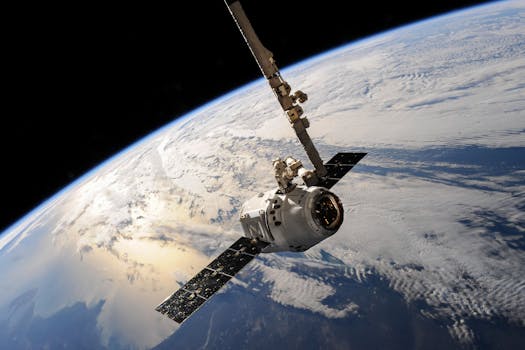The Future of Satellites: Revolutionizing Global Connectivity
The future of satellites is poised to revolutionize global connectivity, enabling faster and more reliable communication networks. With advancements in space technology, satellites are becoming increasingly important for a wide range of applications, from navigation and communication to weather forecasting and Earth observation.

The Future of Satellites: Revolutionizing Global Connectivity
The future of satellites is poised to revolutionize global connectivity, enabling faster and more reliable communication networks. With advancements in space technology, satellites are becoming increasingly important for a wide range of applications, from navigation and communication to weather forecasting and Earth observation. The focus keyword for this article is satellites, and we will explore the latest developments and trends in the satellite industry.
Introduction to Satellites
Satellites have been a crucial part of modern technology for decades, providing a wide range of services that are essential for daily life. From GPS navigation to television broadcasting, satellites play a vital role in connecting people and communities around the world. The first satellite, Sputnik, was launched by the Soviet Union in 1957, marking the beginning of the space age. Since then, thousands of satellites have been launched into orbit, with many more planned for the future.
Advancements in Satellite Technology
Recent advancements in satellite technology have enabled the development of smaller, more efficient, and more cost-effective satellites. The use of advanced materials and manufacturing techniques has reduced the size and weight of satellites, making them more fuel-efficient and easier to launch. Additionally, the development of new propulsion systems, such as electric propulsion, has enabled satellites to travel farther and faster, expanding their range and capabilities. The use of satellites in orbit around the Earth has also enabled the creation of complex networks, such as satellite constellations, which provide global coverage and enable a wide range of applications.
Applications of Satellites
Satellites have a wide range of applications, from navigation and communication to weather forecasting and Earth observation. Navigation satellites, such as GPS, provide location information and timing signals that are essential for modern transportation and communication systems. Communication satellites enable global connectivity, providing internet access, telephone services, and television broadcasting. Weather satellites monitor the Earth’s atmosphere and oceans, providing critical data for weather forecasting and climate modeling. Earth observation satellites monitor the Earth’s surface, providing data on land use, deforestation, and natural disasters.
Challenges and Opportunities
Despite the many advancements in satellite technology, there are still several challenges and opportunities that need to be addressed. One of the major challenges is the growing problem of space debris, which poses a significant risk to operational satellites and the environment. The development of sustainable and responsible space practices is essential for ensuring the long-term viability of space exploration and development. Another challenge is the need for international cooperation and regulation, to ensure that the benefits of satellite technology are shared equitably and that the risks are managed effectively. The opportunities for satellites are vast, with new applications and services being developed all the time. From providing internet access to remote and underserved communities, to enabling the creation of smart cities and intelligent transportation systems, the potential of satellites is limitless.
Conclusion
In conclusion, the future of satellites is poised to revolutionize global connectivity, enabling faster and more reliable communication networks. With advancements in space technology, satellites are becoming increasingly important for a wide range of applications, from navigation and communication to weather forecasting and Earth observation. As the satellite industry continues to evolve and grow, it is essential that we address the challenges and opportunities that arise, to ensure that the benefits of satellite technology are shared equitably and that the risks are managed effectively.
